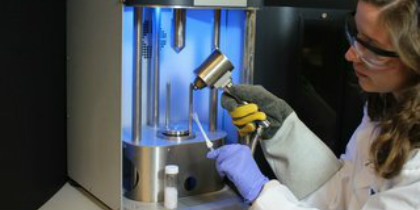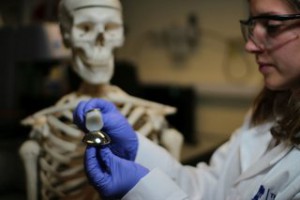
July 4, 2016, by Emma Lowry
Plastic fantastic: its many pioneering medical uses inside us
Despite their ubiquitous nature in everyday products, negative press coverage of plastics is a regular feature of this decade. Eight million tons of plastic a year now end up irresponsibly in our oceans. The whole of the UK – and many other countries – now associates plastic bags with a small tax to discourage their use. There are negative connotations to the term ‘plastic’, and more so the adjective ‘plasticky’, which immediately associates a product with being cheap, lightweight and prone to break at the most inconvenient moment.
I offer counter-arguments to all of these. The presence of plastic in our oceans is the direct consequence of our inability to properly manage recycling and re-use, rather than a flaw with the material itself. The humble plastic bag is a wonder of modern engineering, manufactured at tremendous speeds and very low cost, and enabling us to conveniently carry thousands of times its own weight. This is the equivalent by weight of an entire aeroplane’s worth of luggage carried in a single suitcase! The term ‘plastic’ originates from the Greek word ‘plastikos’ and rather than being pejorative, refers to the manufacturing ease with which the material can be shaped into the complex parts that make up the cases of our television sets, computers and kitchen appliances.
Improving lives with plastics
Of course plastics are regularly used in a medical context, helping to improve the quality of life and save the lives every day. Some plastics have suitable properties for medical implants. The same polyethylene plastic that is so frowned upon in plastic bags is the gold standard for the bearing surface of the cups of hip implants. Many such implants survive 30 years or more because of the material’s exceptionally low rate of wear and the challenging manufacturing process that has led to a small number of failures is much better understood today than ever before.
The same acrylic that is used to make aquariums or fracture-resistant greenhouse panes is also regularly used in the manufacture of intraocular lenses. Most people of a certain age will need cataract surgery to replace clouded crystalline lenses and it is a clear plastic that comes to the rescue in what is now a routine operation. Acrylic is even more transparent than glass and far less brittle as well as being biocompatible and well tolerated by the body as well as helping many people to see well into their twilight years.
While the public knows silicone as the sealant that prevents water from running down the side of the bathtub, this same material is used for a range of medical tubing that take the place of our own body’s ageing internal pipework. Not only does it have fantastic flexibility, it is also biologically inert and can tolerate the majority of the bodily fluids it might encounter without adverse effects. And there are other examples – too many to list here –each as essential and life-saving as the next.
Biopolymers
Many of the reasons why plastics work well in a medical context are connected to the similarities between the materials that make up our bodies and those that make up plastics. Plastics have mechanical properties that are more similar to those of biological tissues than to those of metals or ceramics.
Biology makes use of polymers as building blocks in a variety of contexts, and peptides, lipids and sugars, as well as the nucleic acids are all types of polymers. Plants make extensive use of cellulose – itself a polymer – which is a major constituent of cotton and wood. Polymers that are produced by living organisms – biopolymers – are renewable and an appealing prospect for future plastics. In most cases bioplastics are biodegradable and well tolerated by the body.

The real deal: The cup of an artificial shoulder is made from ultra high molecular weight polyethylene (UHMWPE)
By using polymers with the ability to degrade, it is possible to design temporary implants that fulfil a function over a defined period of time, but that are eventually absorbed by the body. At the University of Nottingham we are working towards the development of new biopolymer-based nanomaterials for applications such as fracture fixation plates and screws.
These are intended to replace the metallic plates and screws used to assist the healing of broken bones, and have a number of potential benefits. Firstly, they do away with the need for a second operation typically required to remove metallic implants after bones have healed. But more importantly, they can lead to better healing by gradually transferring more and more loads to healing bones, helping them to regenerate in the presence of some of the forces they will eventually have to withstand unsupported.
Latest research on medical plastics
One of the big research challenges with medical plastics is to try to match the properties of the implants to those of the bones they support and in the Faculty of Engineering we are attempting to do this by incorporating nanoparticles made up of hydroxyapatite, a natural bone building-block, into the polymer itself. Other research areas on medical polymers at the University of Nottingham include the use of degradable polymers for controlled and targeted drug delivery and the use of polymer coatings as antibacterial surfaces to prevent the growth of bacteria on medical devices and implants.
Examples from this and other medical plastic research will be on public display from Monday 4 July to Sunday 10 July as part of the University of Nottingham ‘Plastics Inside Us’ display at the Royal Society’s Summer Science Exhibition, a free festival of visionary science and technology, held at 6-9 Carlton House Terrace, London, SW1Y 5AG. If you want to find out more about the positive aspects of plastics and why we should be thankful for their existence and welcome it in improving our health and ageing, come and meet the researchers and see the exhibition.
This article – written by Davide De Focatiis, from the Department of Mechanical, Materials and Manufacturing Engineering at The University of Nottingham, who is heading up the Plastics Inside Us team – was originally published on 8 June 2016 in Medical Plastics News.
No comments yet, fill out a comment to be the first


Leave a Reply